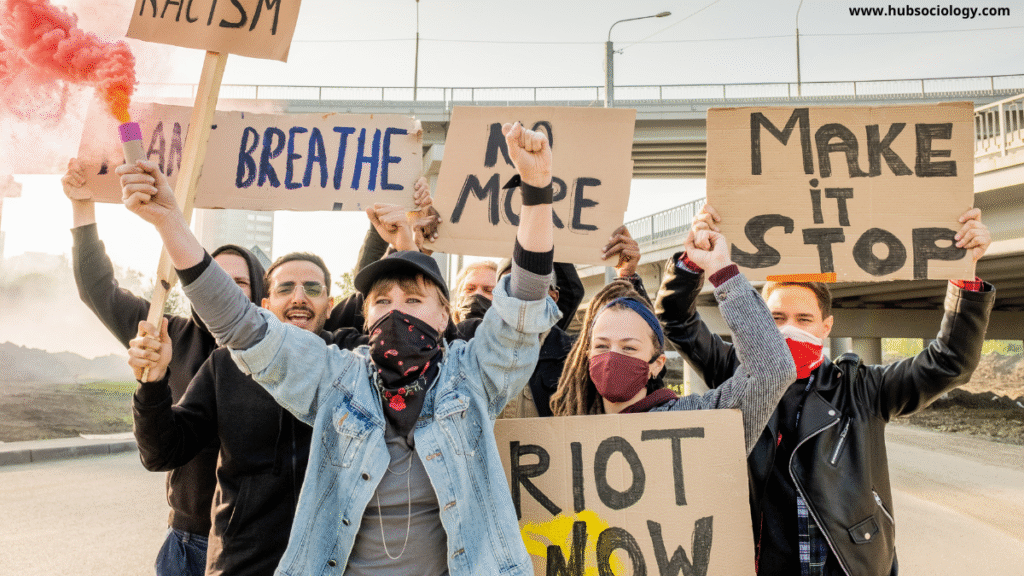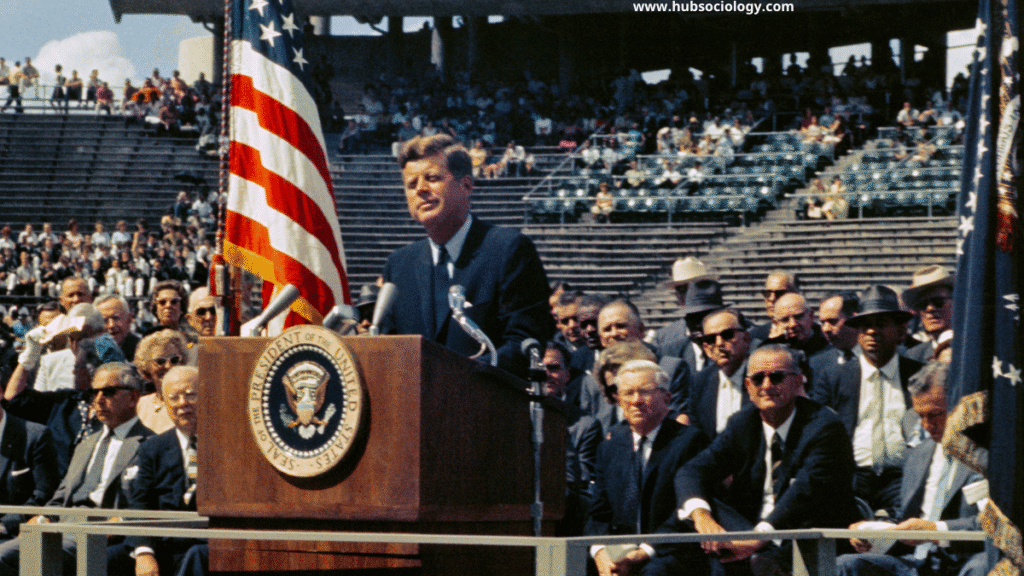Introduction
In the history of sociological thought, Vilfredo Pareto occupies a distinctive place as both an economist and sociologist whose theories of social stratification and political dynamics continue to influence scholarship. Among his key contributions is the theory of the circulation of elites, which explores how ruling groups in society are continuously replaced, restructured, and renewed through a dynamic process. Unlike perspectives that view society as progressing linearly or stabilizing into equilibrium, Pareto emphasized the inevitable cycles of rise and decline within ruling classes. This notion not only offers a critique of democratic ideals but also presents a realist view of power, politics, and social mobility.
The idea of the circulation of elite is central to understanding Pareto’s broader sociology, which was rooted in his critique of idealism and his insistence on the persistent role of elites in all societies. To explore this concept in detail, it is important to situate it within Pareto’s theory of elites, his methodological approach, and its relevance in sociological analysis.

Pareto’s Theory of Elites
Pareto divided society into two fundamental categories: the elite and the non-elite (the masses). He defined elites as those individuals who perform at the highest level in their respective fields—whether politics, economics, administration, or intellectual pursuits. For Pareto, elites are not necessarily morally superior or democratically chosen but rather are marked by their ability, capacity, and skill to influence and dominate.
Within the elites, Pareto further distinguished two subgroups:
- Governing Elites – those who directly hold political power and control the apparatus of the state.
- Non-Governing Elites – those who excel in fields such as business, science, art, or religion but do not wield direct political authority.
Pareto argued that the stability and continuity of society depend upon the circulation between these categories. Elites do not remain fixed; instead, they undergo a process of renewal where old elites decline, and new elites emerge to replace them.
The Concept of Circulation of Elite
The circulation of elite is the process through which ruling classes are gradually replaced by others from the non-elite or lower strata. According to Pareto, history is essentially the story of this continuous circulation. He rejected the notion that societies move toward a more egalitarian or democratic future; rather, he emphasized that power is always concentrated, though the composition of elites changes over time.
The mechanism of circulation operates in two primary ways:
- Decline of Existing Elites: Ruling elites often grow complacent, rigid, or corrupt. Over time, they lose their vitality, efficiency, and legitimacy, which opens the space for new elites to challenge them.
- Rise of New Elites: Individuals or groups from lower strata, possessing energy, ambition, and innovative abilities, rise up and replace the older ruling classes.
Thus, circulation is neither purely voluntary nor democratic; it is often accompanied by conflict, revolution, or gradual institutional change. For Pareto, this cycle is inevitable and eternal—it represents the natural dynamics of social stratification.
The Lions and the Foxes: Psychological Foundations
One of Pareto’s striking contributions was his use of psychological types to explain elite dynamics. He categorized elites into two styles of leadership:
- Lions – representing strength, conservatism, tradition, and coercion. They rely on force, discipline, and loyalty to maintain order. Historical examples include monarchs, military rulers, or authoritarian regimes.
- Foxes – symbolizing cunning, adaptability, persuasion, and innovation. They use manipulation, negotiation, and ideological control rather than brute force. Examples can be seen in diplomats, entrepreneurs, or liberal reformers.
Pareto suggested that successful governance requires a balance between these two types. However, when one style dominates excessively, it leads to imbalance and eventual decline. For example, a ruling elite of only “lions” may become rigid and unable to adapt to change, while a dominance of “foxes” may lead to manipulation and instability. Circulation occurs when one type replaces the other, restoring vitality to the ruling class.
Sociological Implications
The theory of circulation of elite carries significant implications for sociology:

- Critique of Democracy
Pareto was skeptical of democracy as a system of equal participation. He argued that even in democracies, elites dominate decision-making. Elections and institutions merely serve as mechanisms through which circulation occurs—old elites are replaced by new ones, but mass rule remains a myth. - Persistence of Inequality
The theory underlines the structural persistence of inequality. While individuals may move up or down the social ladder, society as a whole remains stratified, with elites monopolizing resources and power. This resonates with modern discussions on elite capture, oligarchy, and plutocracy. - Social Mobility and Renewal
Circulation of elite provides a framework to understand social mobility. Unlike rigid caste systems, modern societies allow some degree of movement. However, Pareto emphasized that this is not for the sake of equality but to ensure that elites remain dynamic and capable. - Conflict and Stability
The circulation of elites explains cycles of revolution, reform, and regime change. When elites resist renewal, tensions grow, often leading to violent upheavals. Conversely, a healthy circulation allows for gradual adaptation, maintaining social stability.
Historical and Contemporary Examples
Pareto’s theory finds resonance in multiple historical and modern contexts:
- French Revolution (1789): The aristocratic elite declined due to rigidity and loss of legitimacy, replaced by bourgeois elites who introduced new political and economic systems.
- Russian Revolution (1917): The Tsarist ruling class was overthrown, replaced by Bolshevik elites, showing that mass uprisings ultimately substitute one elite group with another.
- Modern Politics: In contemporary democracies, the circulation is visible when political dynasties lose influence, and new leaders from business, media, or grassroots movements emerge as ruling elites.
- Corporate World: Leadership changes in multinational corporations also reflect Pareto’s idea—old executives lose relevance, replaced by innovative entrepreneurs or technocrats.
Criticism of Pareto’s Theory
While influential, the theory of circulation of elite has faced criticism:
- Determinism: Critics argue that Pareto’s emphasis on inevitability neglects the role of agency, social movements, and deliberate reforms in shaping society.
- Neglect of Structural Change: By focusing on elites, Pareto downplays the broader transformations in economy, technology, and institutions that influence social order.
- Elitist Bias: His skepticism of democracy and insistence on elite dominance have been criticized as anti-democratic, providing ideological support for authoritarianism.
- Overemphasis on Psychology: The “lions and foxes” classification has been seen as overly simplistic, ignoring complex sociological factors such as class struggle, gender, and race.
Despite these criticisms, the circulation of elite remains a powerful lens to understand the cyclical nature of leadership and power.
Relevance in the 21st Century
In contemporary sociology and political science, Pareto’s insights remain strikingly relevant:
- Global Politics: The fall of authoritarian leaders and rise of populist movements demonstrate the cyclical replacement of elites.
- Economic Elites: The rapid rise of tech billionaires replacing traditional industrial elites illustrates circulation within the economic sphere.
- Social Movements: Grassroots activists who enter mainstream politics embody the renewal of ruling classes.
These examples confirm Pareto’s claim that elites circulate, but never disappear. Power remains concentrated, though the faces and strategies change.

Conclusion
Vilfredo Pareto’s circulation of elite presents a cyclical and realistic interpretation of social change. Rather than envisioning society as moving toward equality or permanent stability, Pareto emphasized the inevitable renewal of ruling classes. By highlighting the roles of “lions” and “foxes,” and by distinguishing governing from non-governing elites, he offered a nuanced framework to analyze the persistence of inequality, the dynamics of power, and the inevitability of change.
While his elitist perspective remains contested, Pareto’s theory continues to resonate in the sociological study of politics, revolutions, and social stratification. The circulation of elite reminds us that history is not simply a story of progress or decline but a continuous cycle where power shifts hands, and society adapts to new ruling groups.
Do you like this this Article ? You Can follow as on :-
Facebook – https://www.facebook.com/hubsociology
Whatsapp Channel – https://whatsapp.com/channel/0029Vb6D8vGKWEKpJpu5QP0O
Gmail – hubsociology@gmail.com
Topic-related questions
5 Marks Questions
(Short-answer / concept-check type)
- Who are considered “elites” in Pareto’s theory?
- Differentiate between governing elites and non-governing elites.
- Define the concept of “circulation of elite.”
- What are “lions” and “foxes” in Pareto’s theory of elites?
- Why did Pareto consider democracy a form of elite rule?
10 Marks Questions
(Moderate detail, explanation-based)
- Explain Pareto’s classification of elites into “governing” and “non-governing.”
- Discuss the role of “lions” and “foxes” in the circulation of elite.
- How does Pareto’s theory of circulation of elite critique the idea of democracy?
- Illustrate the process of elite circulation with historical examples.
- Critically examine the psychological basis of Pareto’s theory of elites.
15 Marks Questions
(Long-answer / analytical type)
- Examine the sociological significance of Pareto’s concept of circulation of elite.
- “History is the graveyard of elites.” Discuss this statement in light of Pareto’s theory.
- Critically evaluate the strengths and weaknesses of Pareto’s circulation of elite theory.
- How does Pareto’s theory of circulation of elite explain social mobility and regime change?
- Discuss the contemporary relevance of Pareto’s circulation of elite in understanding political and economic power.
